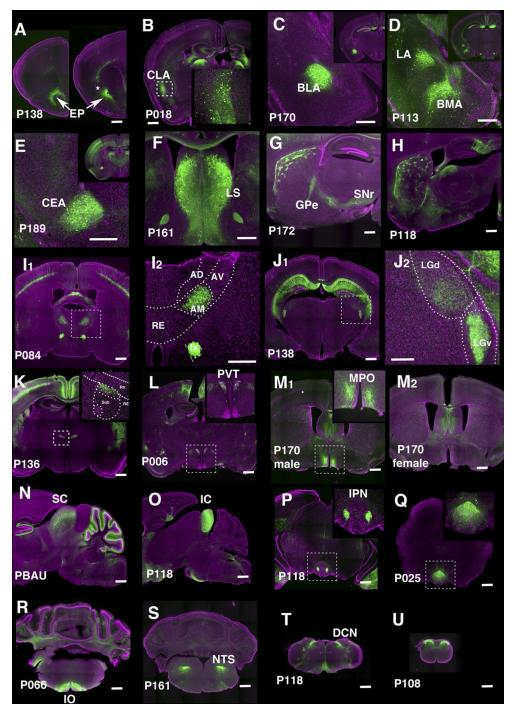

These are lines labeling cortical subplate, mesencephalic, and diencephalic cell types (see Fig. 7 in Shima et al.).
Credit: eLIFE
Brandeis scientists Yasu Shima, Sacha Nelson and colleagues report in the journal eLife on a new approach for genetically identifying and manipulating these cell types.
Cells in the brain have different functions and therefore express different genes. Important instructions for which genes to express, in which cell types, lie not only in the genes themselves, but in small pieces of DNA called enhancers found in the large spaces between genes.
The Brandeis group has found a way to highjack these instructions to express other artificial genes in particular cell types in the mouse brain.
Some of these artificially expressed genes (also called transgenes) simply make the cells fluorescent so they can be seen under the microscope.
Other transgenes are master regulators that can be used to turn on or off any other gene of interest.
This will allow scientists to activate or deactivate the cells to see how they alter behavior, or to study the function of specific genes by altering them only in some cell types without altering them everywhere in the body.
In addition to developing the approach, the Brandeis group created a resource of over 150 strains of mice in which different brain cell types can be studied.












